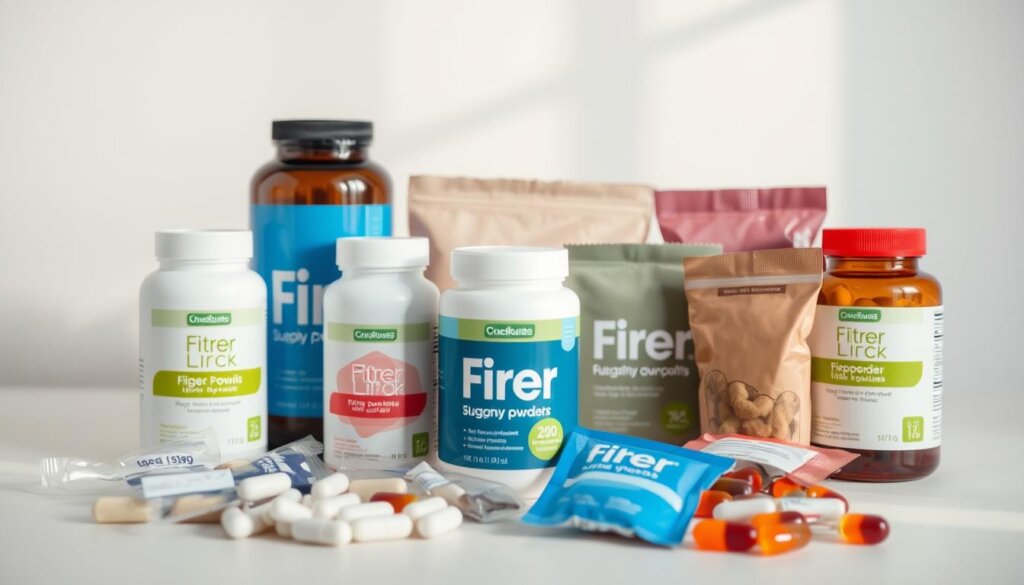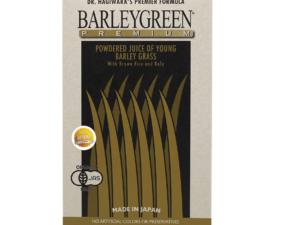Did you know 93% of Americans fall short of their daily fiber needs? Modern diets, packed with processed foods, leave little room for this essential nutrient. The result? Gut imbalances, weight struggles, and weakened immunity.
In Malaysia, health awareness is growing, and fiber plays a key role. The gut houses trillions of microbes that thrive on fiber. Without enough, digestion suffers, and overall wellness declines.
Wellness Group, a trusted name in digestive health, offers expert guidance. Their organic barley green powder is rich in dietary fiber, supporting gut balance and vitality. For personalized advice, reach out via WhatsApp at +60123822655.
Key Takeaways
- Most people don’t get enough fiber, leading to health issues.
- Fiber supports gut microbes, digestion, and immunity.
- Processed foods contribute to widespread fiber deficits.
- Supplements like barley green powder can fill nutritional gaps.
- Wellness Group provides expert solutions for better fiber intake.
Why Fiber Is Essential for Your Health
Your gut health depends heavily on one key nutrient: fiber. It fuels digestion, supports immunity, and keeps your microbiome balanced. Without it, your body struggles to process food efficiently.
The Role of Fiber in Digestion
Fiber works like a scrub brush for your intestines. Insoluble fiber adds bulk to stool, speeding up bowel movements. Soluble fiber forms a gel, slowing glucose absorption and lowering cholesterol.
Studies show 30g daily reduces colorectal disease risks by 40%. For example, post-bariatric surgery patients often face fiber shortages, leading to constipation. Supplements like barley powder can bridge this gap.
How Fiber Supports Gut Health
Your gut hosts trillions of microbes—10 times more than body cells. They ferment fiber into short-chain fatty acids, which:
- Strengthen the colon lining
- Reduce inflammation
- Boost metabolic health
Low fiber intake is linked to IBS and diverticulitis. The USDA recommends these daily amounts:
| Group | Fiber (grams/day) |
|---|---|
| Men (under 50) | 38 |
| Women (under 50) | 25 |
| Adults over 50 | 21–30 |
Pair fiber with water for optimal results. For personalized advice, consult Wellness Group at +60123822655.
Best Time to Take Fiber for Maximum Benefits
Fiber works differently depending on when it’s consumed. Choosing the right moment can enhance its benefits for digestion, weight management, and blood sugar control.
Morning Intake for Weight Management
Starting the day with fiber helps curb hunger. Research shows it reduces calorie intake during lunch and dinner by up to 12%. This happens because soluble fiber forms a gel-like substance in the stomach.
For example, beta-glucan—a type of soluble fiber—can lower A1C levels by 0.68% in diabetics when taken consistently. Morning consumption also aligns with natural cortisol peaks, which boosts metabolism.
Evening Intake for Digestive Regularity
Taking fiber at night supports overnight digestion. It may prevent late-night cravings by keeping you feel fuller longer. However, spacing it at least two hours before bed reduces bloating risks.
Psyllium husk, studied over six months, shows significant improvements in blood glucose stability. Pairing it with water maximizes its effectiveness for morning bowel movements.
- Separate fiber from medications by 1–2 hours to avoid absorption issues
- Adjust doses gradually to let your body adapt
- Monitor hydration to prevent discomfort
For tailored advice on integrating fiber into your routine, explore expert recommendations or contact Wellness Group at +60123822655.
Health Benefits of Taking Fiber Supplements
Many overlook the powerful impact of fiber supplements on overall wellness. These dietary additions do more than aid digestion—they actively improve metabolic and cardiovascular health.
Lowering Cholesterol Levels
Soluble fiber, like psyllium, binds to bile acids in the gut. This process forces the liver to use excess cholesterol to produce more bile, reducing LDL levels by up to 7%.
Studies show combining psyllium with statins drops LDL by 63 mg/dL. For hypertension, 20g daily of soluble fiber lowers systolic blood pressure by 1.79 mmHg.
Stabilizing Blood Sugar
Gel-forming fibers slow glucose absorption, preventing spikes. Beta-glucan, found in oats, reduces A1C by 0.68% in diabetics. The ileal brake mechanism further delays nutrient absorption.
Non-viscous fibers (e.g., inulin) lack this effect. For optimal results, pair supplements with whole foods like apples or lentils.
Promoting Weight Loss
Fiber-induced satiety cuts calorie intake by 12% daily. Psyllium expands in the stomach, triggering fullness signals. Research notes 3.3–89.7 mg/dL drops in fasting glucose with consistent use.
Contrary to myths, fiber doesn’t target belly fat directly. Instead, it supports gradual weight loss by improving gut microbiome function.
“Short-chain fatty acids from fermented fiber strengthen the gut lining and reduce inflammation.”
For personalized plans, Wellness Group tailors fiber intake to individual needs. Reach them at +60123822655 to start your journey.
Types of Fiber Supplements and How to Choose
Not all fiber supplements work the same way—knowing the types helps. From powders to gummies, each form suits different dietary needs and lifestyles. Here’s how to pick the right one.

Soluble vs. Insoluble Fiber
Soluble fiber dissolves in water, forming a gel that slows digestion. It’s great for blood sugar control and lowering cholesterol. Psyllium (like Metamucil) and beta-glucan are common examples.
Insoluble fiber adds bulk to stool, aiding regularity. Methylcellulose (Citrucel) is a popular choice. For IBS sufferers, low-FODMAP options like acacia gum reduce bloating.
Powders, Capsules, and Gummies
Powders mix easily with water or smoothies. They’re cost-effective but may require multiple servings. Look for NSF/USP-certified brands to ensure purity.
Capsules are convenient but often need 15+ pills daily to meet needs. Gummies taste better but may contain added sugars. Absorption rates vary—powders work fastest.
- Gluten-free: Opt for certified products if sensitive.
- Cost vs. convenience: Powders save money; gummies ease travel.
- Start slow to avoid gas or cramps.
“Gradual increases in fiber intake help the gut adjust without discomfort.”
For personalized advice on fiber supplements, Wellness Group offers tailored solutions. Contact them at +60123822655.
How to Incorporate Fiber into Your Daily Routine
Boosting fiber intake requires smart daily habits. Small changes, like adding berries to breakfast or swapping white rice for quinoa, add up. Consistency and hydration turn these tweaks into lasting results.
Starting Slow to Avoid Discomfort
Increase fiber intake by 1–2g daily to let your gut adjust. Sudden spikes may cause bloating or cramps. A 7-day ramp-up plan eases the transition:
| Day | Fiber Increase | Example Foods |
|---|---|---|
| 1–2 | +1g | ½ apple, ¼ cup oats |
| 3–4 | +2g | 1 cup broccoli, ½ cup lentils |
| 5–7 | +3g | 1 pear, ¼ cup almonds |
Walking 20 minutes daily enhances tolerance by stimulating digestion. Urban dwellers often need more planning than rural residents due to processed food reliance.
Pairing Fiber with Water for Better Results
Water is fiber’s partner—aim for 64oz daily. Dehydration can worsen constipation. Track intake with apps or marked bottles.
- High-water foods: Cucumbers, celery, or watermelon aid hydration.
- Limit caffeine/alcohol—they dehydrate.
- Signs of imbalance: Dry mouth or dark urine.
“Gradual adjustments prevent osmotic diarrhea, a common side effect of rapid fiber increases.”
For personalized routines, Wellness Group tailors plans to your lifestyle. Contact them at +60123822655.
When to Avoid Fiber Supplements
Fiber supplements aren’t for everyone—some medical conditions require caution. While they aid digestion for many, certain healthcare scenarios demand avoidance to prevent complications.

Medical Conditions That Need Care
Diverticulitis flares often require a low-fiber diet to rest the bowel. Similarly, Crohn’s disease patients with strictures risk blockages—fiber can worsen narrowing.
Post-surgery protocols may limit fiber temporarily. Always consult a healthcare provider before reintroducing supplements after procedures.
Potential Side Effects to Monitor
About 37% of users report initial bloating. Severe symptoms like rectal bleeding or inability to pass stool need immediate medical attention.
Fiber binds to some medications, reducing absorption. Space them 2+ hours apart. Watch for these interactions:
| Medication | Interaction Risk | Solution |
|---|---|---|
| Warfarin | Reduced efficacy | Take 3 hours apart |
| Diabetes drugs | Blood sugar drops | Monitor levels closely |
| Antidepressants | Delayed absorption | Adjust timing |
- Danger signs: Severe pain, vomiting, or fever.
- Alternatives: Low-FODMAP fibers like acacia gum for sensitive guts.
- Hydration: Drink 8+ glasses of water daily to ease digestion.
“Sudden fiber spikes can trigger bowel obstructions in high-risk patients—gradual increases are safer.”
Expert Advice from Wellness Group
Wellness Group tailors fiber plans to individual healthcare needs. Their team, including colorectal specialist Dr. Quatrino, designs strategies for gut health, weight management, and post-bariatric recovery.
Customized Nutrition Plans
Malaysians benefit from localized guidance. Multilingual consultants assess diet habits, allergies, and goals. For example, post-surgery patients receive low-FODMAP protocols to ease digestion.
- Free gut health assessments: Identify fiber gaps via symptom analysis.
- Weekend availability: Consultations from 10 AM–5 PM on Saturdays and Sundays.
- Support groups: Share experiences and track progress with peers.
“Fiber adjustments should align with medical history—what works for one gut may harm another.”
How to Reach Us
Wellness Group simplifies contact with flexible options:
| Service | Hours | Method |
|---|---|---|
| General Consultations | Mon–Fri, 9:30 AM–6:30 PM | WhatsApp: +60123822655 |
| Urgent Inquiries | Every day until 5 PM | Call or walk-in |
Explore their organic barley powder for a fiber-rich supplement option. For personalized plans, message them anytime.
Conclusion
Balancing fiber intake supports long-term digestive health. Morning use aids metabolism, while evening doses promote overnight regularity. Start slow—increase by 1–2g per day to avoid bloating.
Since the FDA doesn’t regulate supplements, choose trusted brands like Wellness Group’s organic barley powder. In Malaysia, higher fiber diets correlate with longevity—93% of locals fall short of daily needs.
For personalized plans, WhatsApp Wellness Group at +60123822655. Small changes today create lasting benefits for your gut and overall wellness.
FAQ
Why is fiber important for health?
Fiber plays a key role in digestion, supports gut health, and helps maintain steady blood sugar levels. It also contributes to weight management and lowers cholesterol.
When is the ideal time to take fiber supplements?
Morning intake can aid weight management, while evening consumption may improve digestive regularity. The best time depends on individual health goals.
What are the benefits of fiber supplements?
They help lower cholesterol, stabilize blood sugar, promote weight loss, and support bowel movements. Different types offer unique advantages.
How do soluble and insoluble fiber differ?
Soluble fiber dissolves in water, forming a gel that slows digestion. Insoluble fiber adds bulk, helping food pass through the digestive system more efficiently.
What’s the best way to start taking fiber supplements?
Begin with small doses and gradually increase intake to avoid bloating. Drinking plenty of water helps prevent discomfort.
Are there situations when fiber supplements should be avoided?
People with certain medical conditions, like bowel obstructions, should consult a doctor before taking fiber. Overconsumption may cause gas or cramping.
How can Wellness Group assist with fiber intake?
Their experts provide personalized recommendations based on individual health needs. Contact them at +60123822655 for tailored advice.





